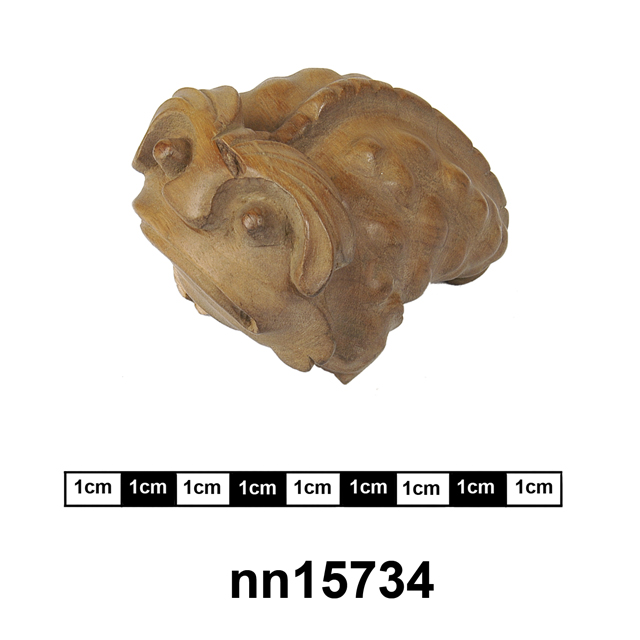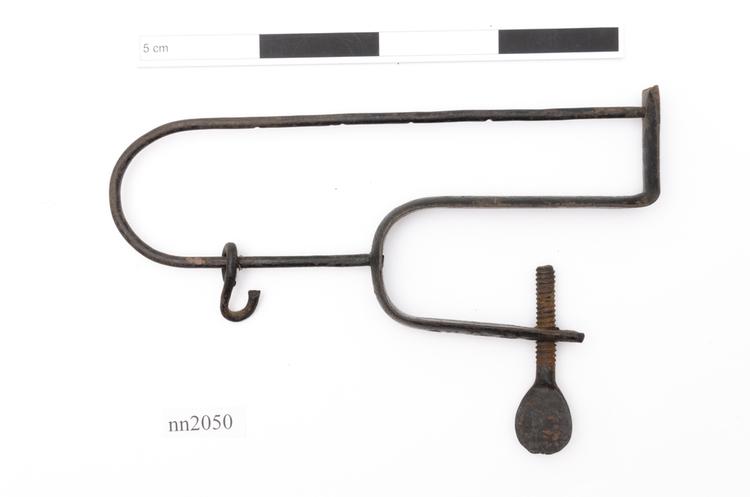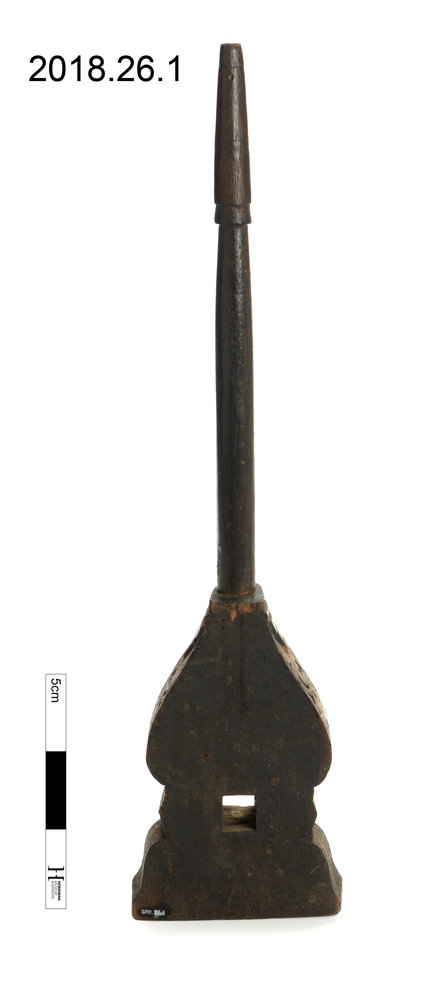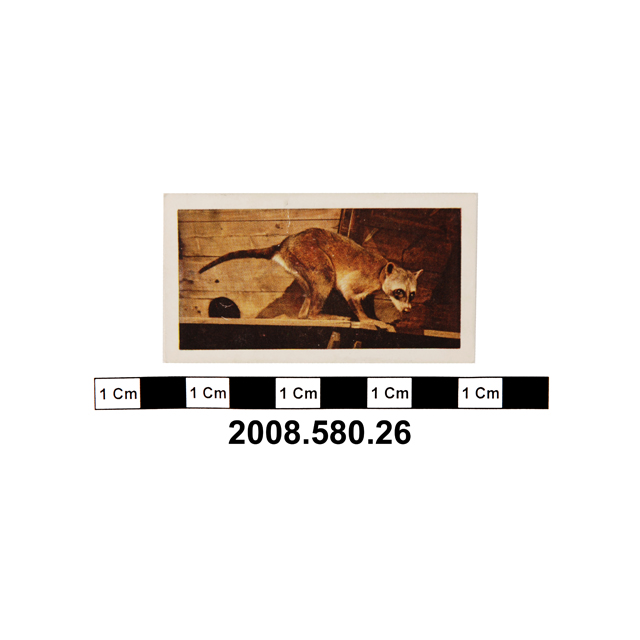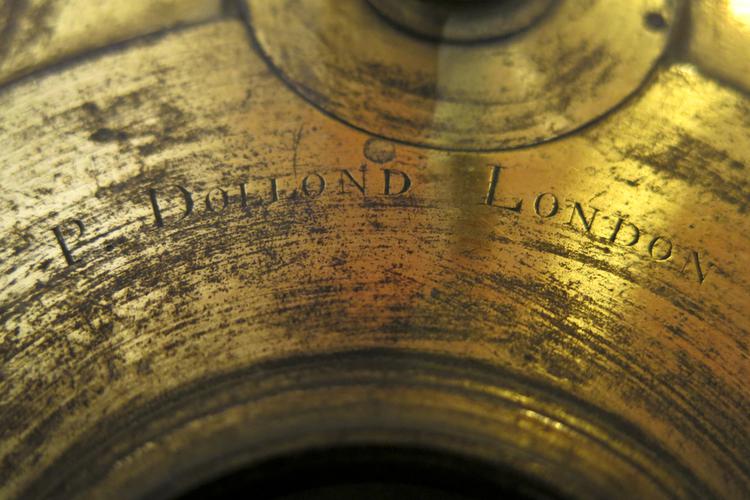
Boxed slide-pillar microscope, of a type designed by John Cuff in 1744, called 'Mr. Cuff's new-constructed Double Microscope'. The microscope is made of brass. The body of the microscope is held on a pillar, with a screw that allows it to be raised and lowered. The stage is attached to the pillar. This was a major innovation in Cuff's microscope, as it removed the need for the stage to have legs, allowing easier access for the hands. Below the stage would be a mirror to reflect light upwards, mounted on a semicircular brass stand. The mirror has been removed, and is stored in a draw in the wooden base of the microscope. The draw also houses a set of lenses of different sizes, several tools, and a box of slides. The slides are made of elephant ivory, with specimens encapsulated in discs of mica. The specimens include feathers, an insect wing, fibres, and small insects, including a flea.
The microscope is housed in a tall, trapezoidal wooden box, which also has a drawer in the base, containing more parts and equipment. The microscope is unsigned, and does not have any makers' marks visible.
Also housed in the microscope box are the brass plate and mirror of a solar microscope, made by P. Dollond of London. It is signed on the plate. The other parts of the solar microscope are not present. Both the Cuff-type microscope and solar microscope were probably manufactured in the late 18th century.



